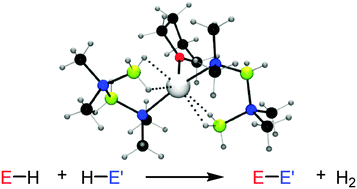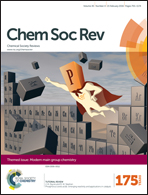Dehydrocoupling routes to element–element bonds catalysed by main group compounds†
Abstract
Dehydrocoupling reactions, i.e. reactions involving elimination of H2 between two E–H bonds, provide a clean route to E–E bonds within the main group. The products afforded from these reactions have applications in organic synthesis and materials chemistry, and in addition the H2 released during these reactions can also be useful as an energy source. Previous methods for dehydrocoupling involve both thermal and transition metal catalysed routes but recent developments have shown that main group compounds can be used as catalysts in these reactions. This tutorial review will focus on the development of main group catalysed dehydrocoupling reactions as a route to heteronuclear element–element bonds.

- This article is part of the themed collection: Modern Main Group Chemistry

 Please wait while we load your content...
Please wait while we load your content...